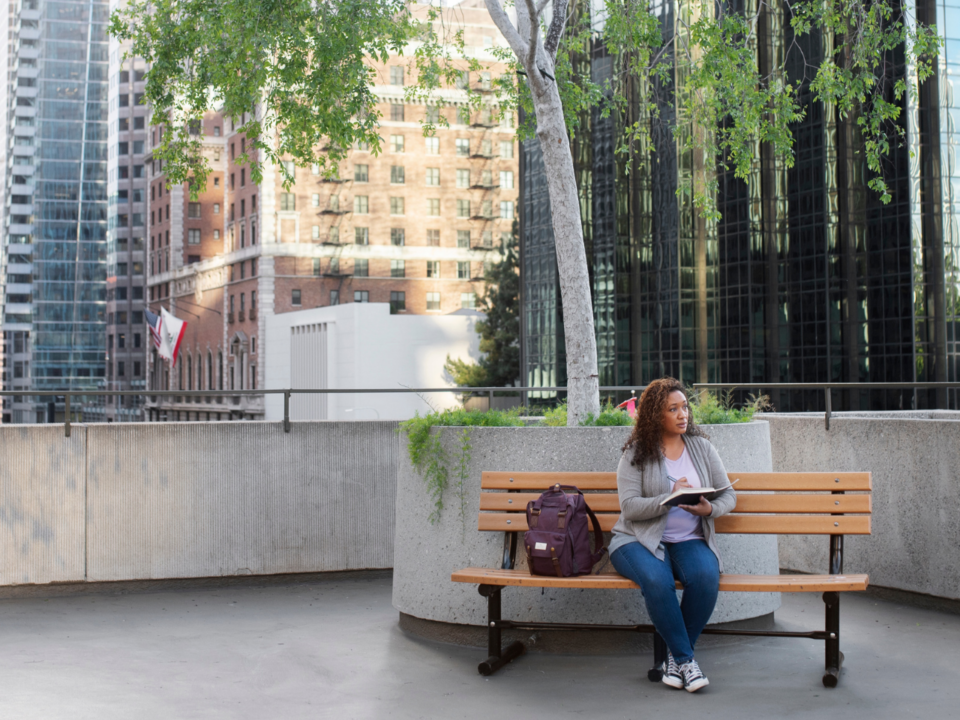The Financial District is nestled among towering skyscrapers and the bustling streets of New York City. What comes with the hustle and bustle of the area is job opportunities because the “Concrete Jungle” is home to some of the world’s most renowned financial institutions, corporate headquarters, and historical landmarks like Wall Street and the New York Stock Exchange. Yet, with the fast pace of business and towering buildings of steel and glass, there is a lack of greenery.
Carbon Footprint of FiDi
It’s no secret that the Financial District, like many urban areas, faces challenges regarding its carbon footprint. With skyscrapers dominating the skyline and taxis weaving through the crowded streets, it makes sense that FiDi’s carbon footprint is larger than that of other areas. Yet, FiDi has unique, sustainable practices that other cities have not yet adopted.
First, transportation is a key aspect of green living. With millions of commuters, FiDi has an extensive public transportation network that continues to minimize its carbon footprint. From subways to buses and ferries, the area provides residents with eco-friendly alternatives.
According to the NYC Environment and Health Data Portal, in 2017-2021, 49.7 percent of New Yorkers used public transportation when commuting, 26.8 percent used a private vehicle, 9.5 percent walked, and 1.4 percent biked.
Compared to the national average, NYC is one of the top cities when offering commuting alternatives.
“Few Americans take public transit, walk, or cycle to work and that is not for a lack of interest – it can be attributed to the lack of accessible and integrated active mobility and transit infrastructure. Nearly 45% of Americans have no access to public transportation options at all,” states the Institute for Transportation and Development Policy.
Another way FiDi is making strides towards sustainability is through the competitive nature of businesses. Consumers are more environmentally conscious than ever before, and many are demanding companies step up their sustainability practices. Because of this competitive nature on the streets of Lower Manhattan, many businesses–whether they like it or not–are adopting more environmentally-friendly practices.
Only blocks away from Wall Street, three buildings stand out for having eco-friendly and sustainable buildings.
- The One World Trade Center goes above and beyond in terms of recycled materials, rainwater collection, a fuel cell system, renewable energy, and energy-efficient lighting. “The building’s structure and interiors include recycled materials like gypsum boards and ceiling titles. The tower recycles about 80% of its waste, showcasing its commitment to waste reduction,” states Building Renewable. “Fuel Cell System: One of the largest installations in the world, the tower’s PureCell phosphoric acid fuel cells generate a substantial 4.8 megawatts of power. Additionally, the waste steam from these cells is harnessed to generate electricity.”
- Another eco-friendly building only minutes from Wall Street is The Solaire, which is a residential tower. Building Renewable says it “stands out as a model of green living” and surpasses New York’s current guidelines by 35 percent.
- The Visionaire (condominium complex) offers a green rooftop, has innovative curtain wall technology (efficient when cooling and heating), good air quality, and advanced water conservation practices.
New York has several eco-friendly buildings that are actively taking a stance to minimize environmental harm, but these are three that stand out and are located in Lower Manhattan.
Beyond sustainable buildings, the district is witnessing a surge in the adoption of electric vehicles (EVs), solar panels, and green spaces. These initiatives not only contribute to a healthier urban environment but also demonstrate a collective commitment to reducing carbon emissions.
Being More Environmentally Friendly
Although there have been strides to be more environmentally friendly, there are still big steps that need to be taken.
Here are five ways you and your family can minimize your carbon footprint:
- Utilize Public Transportation
- Invest in Renewable Energy
- Reduce, Reuse, Recycle
- Support Sustainable Businesses
- Engage in Community Initiatives
While individual actions are important, it’s essential to recognize that the burden of solving the environmental crisis should not rest solely on the consumer’s shoulders. No matter how many plastic straws people use, alternative transportation they take, or environmentally-friendly businesses residents support, the overarching impact comes down to corporate practices.
All in all, the Financial District is making significant strides towards sustainability, with initiatives ranging from public transportation improvements to the construction of eco-friendly buildings. However, there’s still work to be done.
Main photo courtesy of freepik.com

